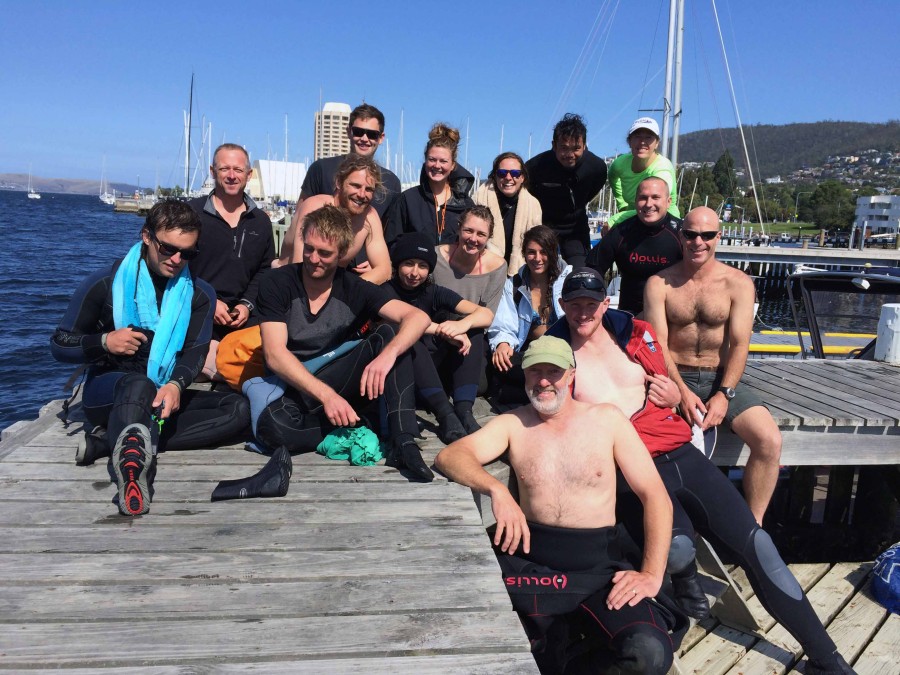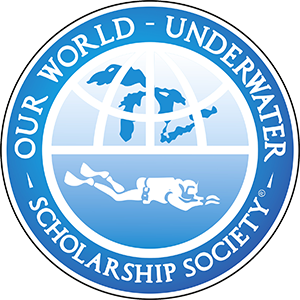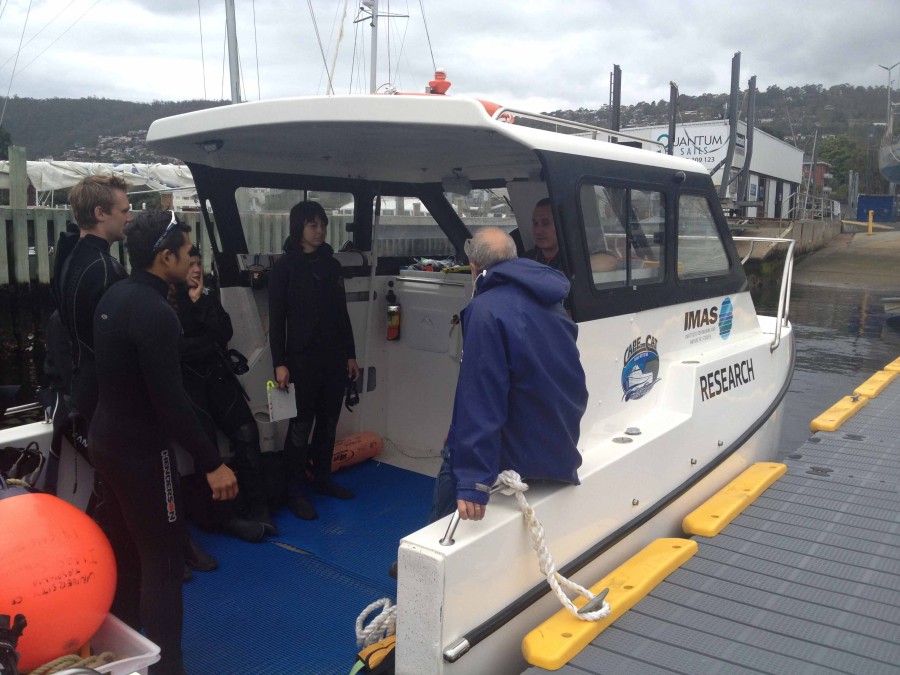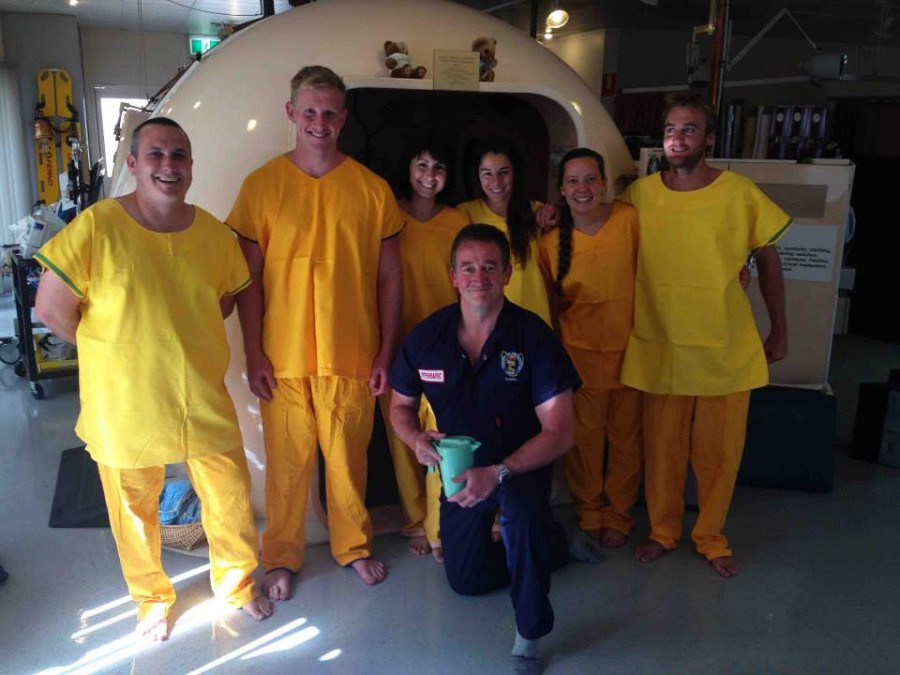Training in the worst conditions really helps to prepare divers for adverse scenarios, and the scientific diving course run in the Derwent river, Tasmania, does exactly this. Undertaken on top of a thick layer of silt, in some cases with very little light, and close to zero visibility on the majority of dives, the ADAS scientific course run with the University of Tasmania presents a great challenge.
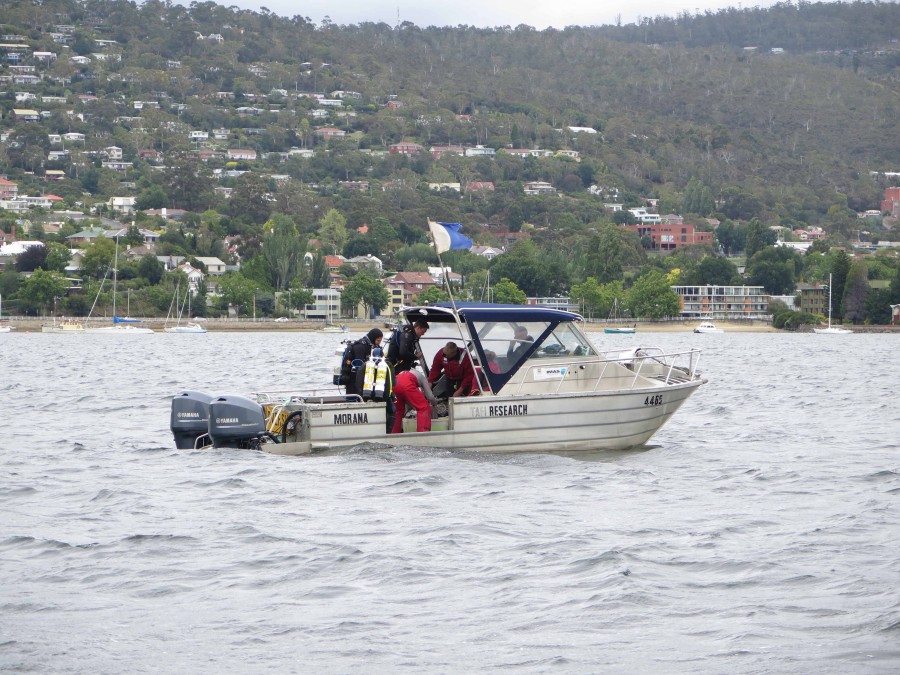 Over a three week period students are subject to several intense days of diving in between theory lessons and exams. The course covered a range of practical skills from deep/shallow rescues, puzzle solving, navigation, reserve systems, full face masks, sediment sampling and the use of hand tools. Whilst also putting students in leadership roles to perform risk assessment, co-ordinating and standby diver duties.
Over a three week period students are subject to several intense days of diving in between theory lessons and exams. The course covered a range of practical skills from deep/shallow rescues, puzzle solving, navigation, reserve systems, full face masks, sediment sampling and the use of hand tools. Whilst also putting students in leadership roles to perform risk assessment, co-ordinating and standby diver duties.
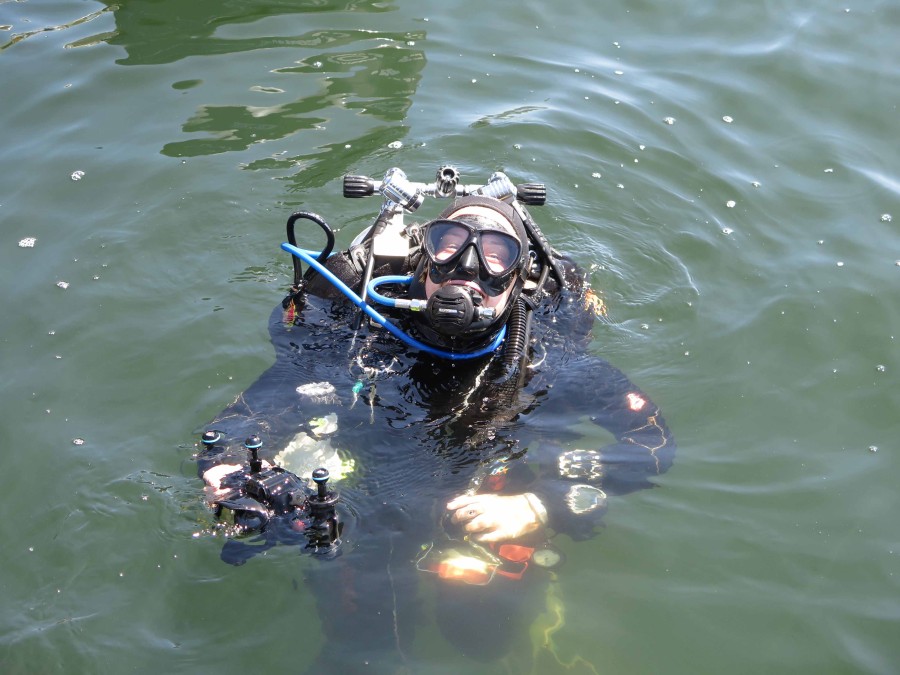
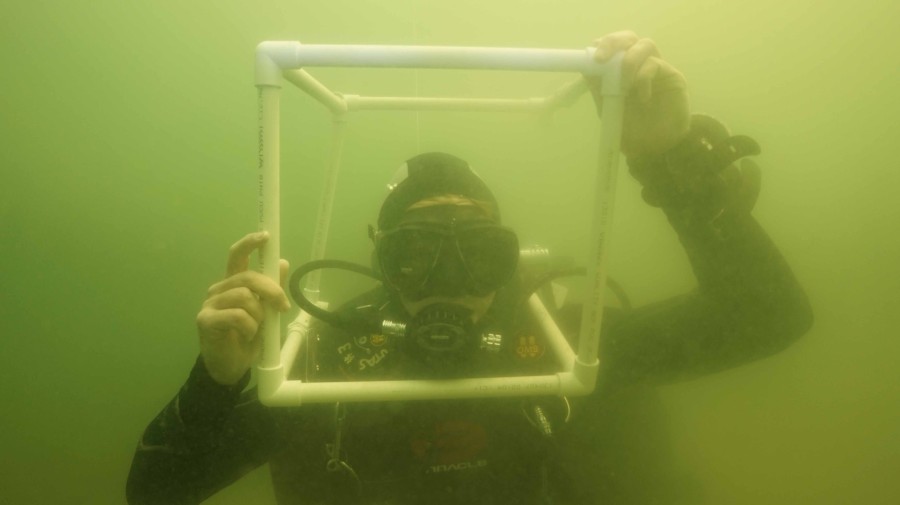
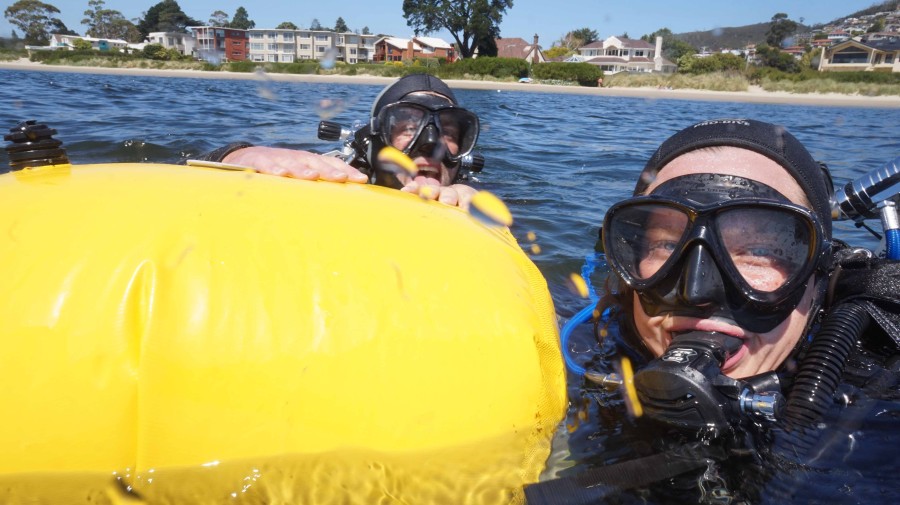
The image below shows the topside operations involved in line rope signals. Underneath, each buddy relies of surface line pulls to navigate their way to each fixed buoy. Although this seems relatively simple, memory of line sequences, rope tension, and kicking speed all played a role in multiple attempts to reach just one fixed point. Collision of all three buddy pairs also led to rope entanglement creating havoc on the topside as well. 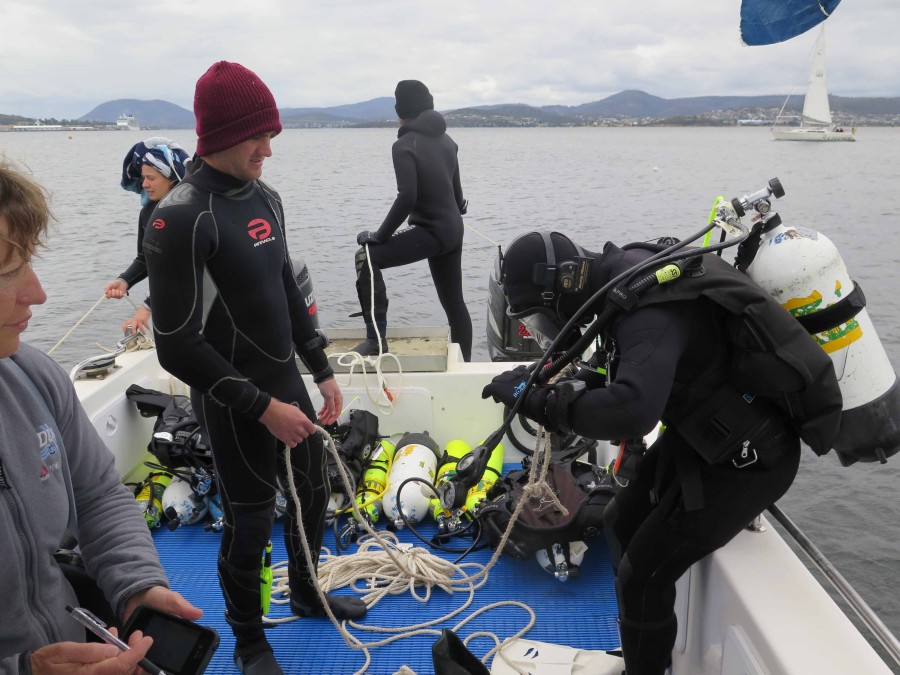
Another highlight of the course was conducting a group chamber dive – mainly because each diver was issued a pair of flattering yellow pyjamas and the visibility inside the chamber was a 100 times better than any of the dives in the Derwent. Other differences included the extreme temperature fluctuations on ascent and descent, the density of air at 30m which felt ‘thick’ to wave your hand through and of course the ability to speak, with the high pitch voices creating great entertainment.
During the theory sessions we covered physiology, diving illnesses, physics, equipment, DCIEM tables and regulatory standards. Additionally, we were given the opportunity to dissemble regulators and tank valves (then hopefully put them back together), and learnt how to operate the onsite compressors.
Overall, this course provided great insight to both the topside and underwater operations of scientific diving. I’m sure every student will find the skills extremely useful for future research, and while it is an intensive three weeks, the relationships built and skill repetition each day proves it an effective way to conduct the course. Thank you to the University of Tasmania team for making this such an enjoyable experience!
